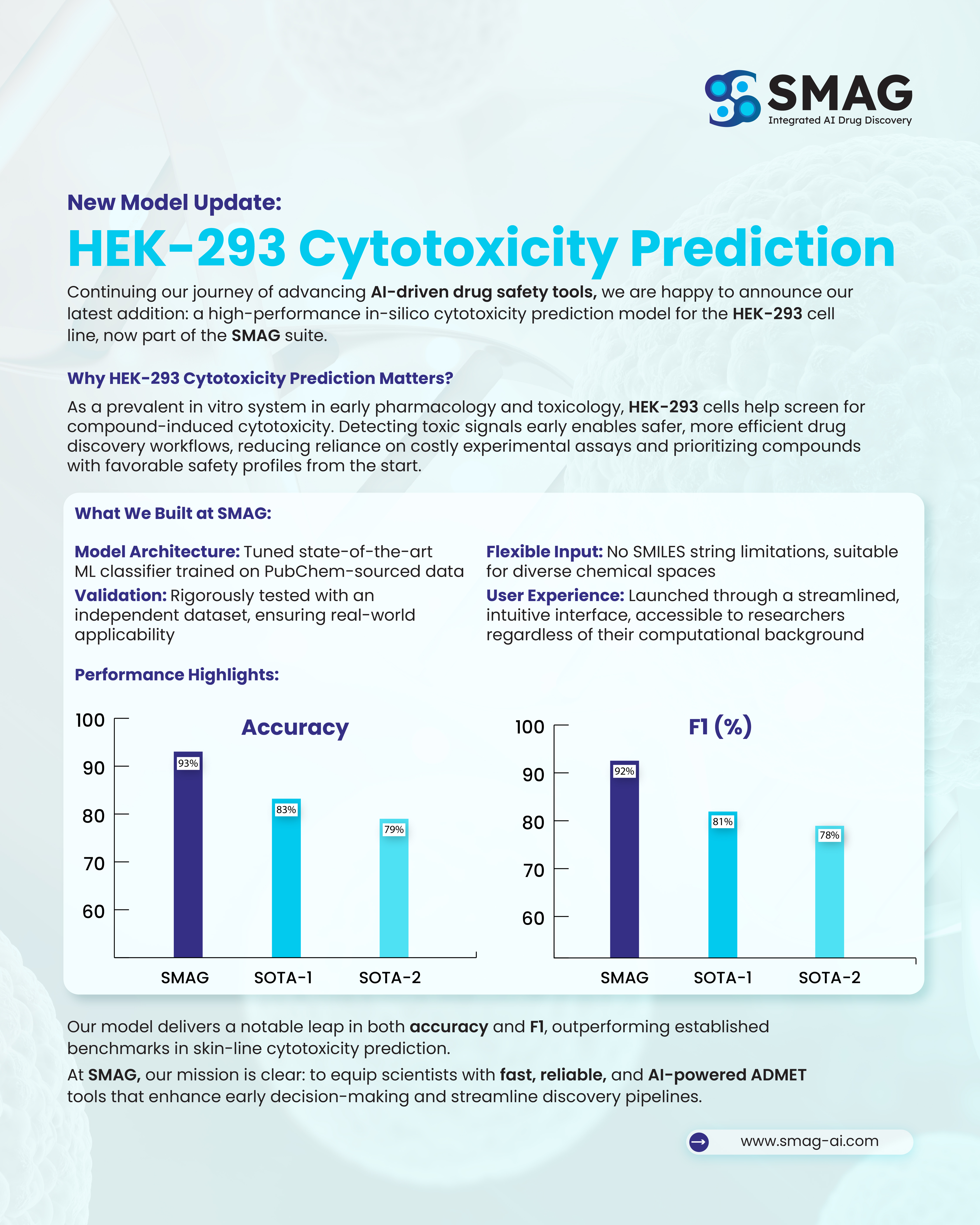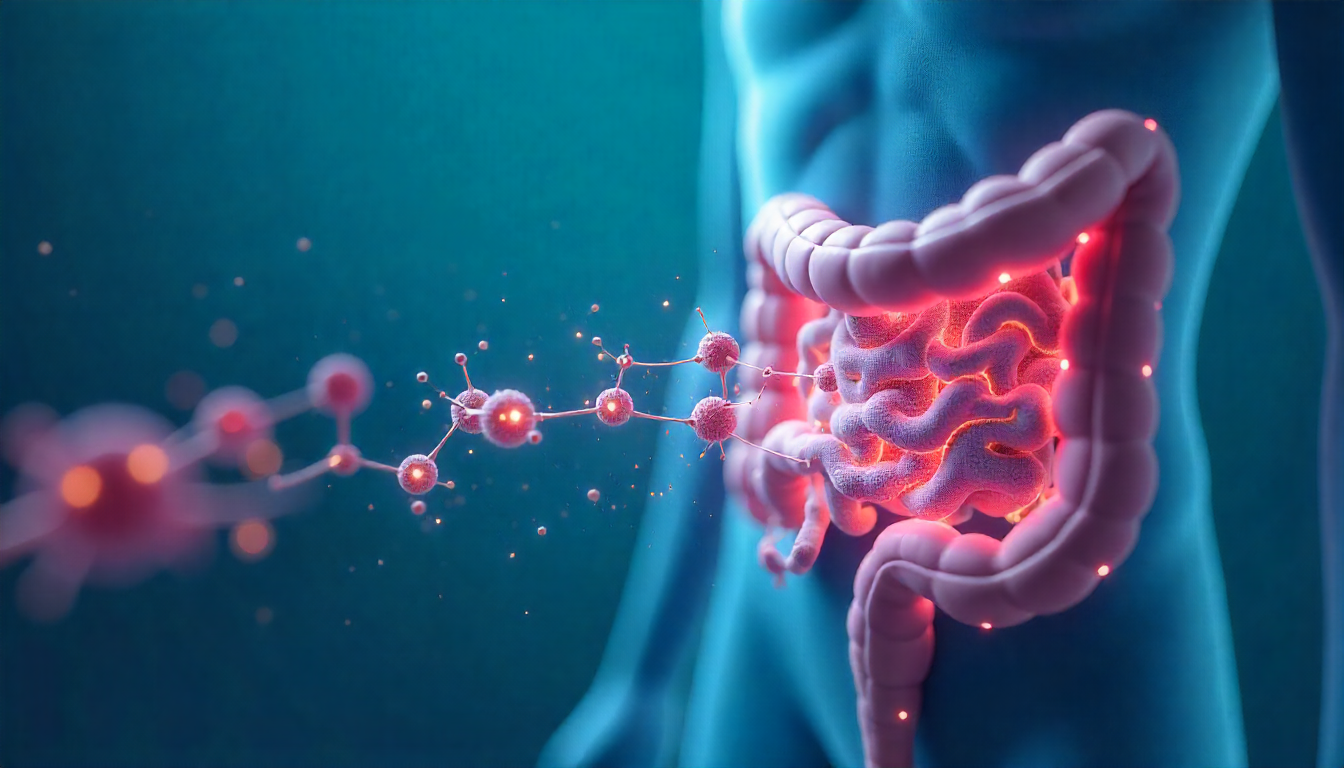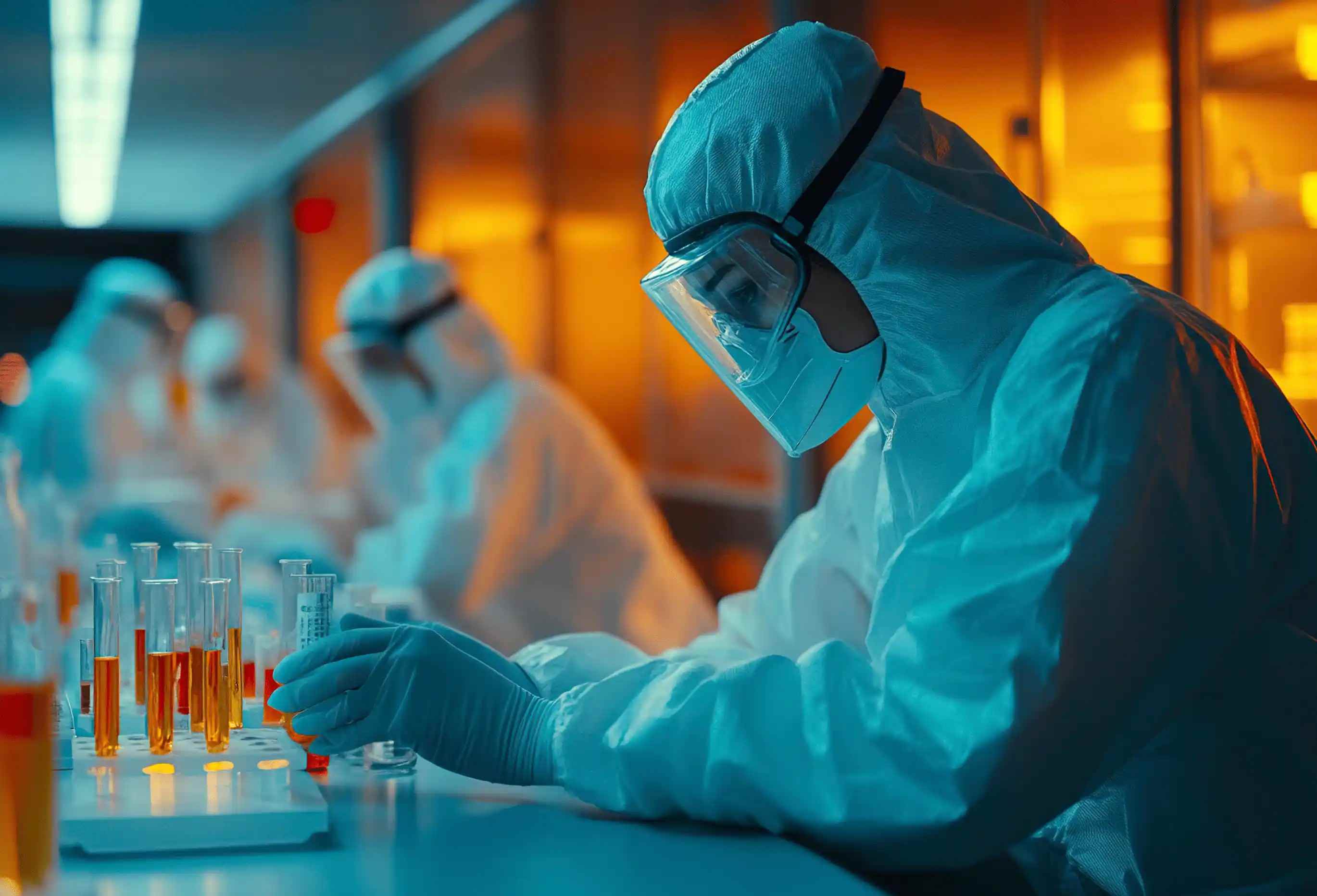
A New Milestone in AI-Powered ADMET Profiling
Every new drug candidate carries promise — but also risk. One of the greatest challenges in drug discovery is identifying compounds that may be harmful to human cells before costly experiments and clinical trials begin. Early recognition of cytotoxicity is not just about efficiency; it’s about protecting patients and focusing research efforts on the most viable compounds.
The HEK-293 Cytotoxicity Prediction Model, developed by SMAG, is designed with this purpose in mind. By leveraging large experimental datasets and validated modeling approaches, it provides researchers with an effective tool to predict cytotoxicity early in the discovery pipeline.
Why HEK-293 Cells Matter
The HEK-293 (Human Embryonic Kidney 293) cell line has become one of the most widely used laboratory systems in pharmaceutical research. It offers several advantages:
- Human relevance: Originating from human kidney cells, they provide insights closer to clinical outcomes compared to some animal models.
- Consistency: A well-characterized and stable cell line for reproducible results
- Versatility: Widely used in toxicology, gene expression studies, and drug metabolism experiments.
Because HEK-293 cells are sensitive indicators of cellular toxicity, they serve as a valuable model for detecting whether a compound is likely to damage human cells.
SMAG’s HEK-293 Cytotoxicity Prediction Model
SMAG’s model has been carefully trained and validated to ensure scientific reliability while remaining practical for day-to-day research use.
Key Characteristics
- Foundation in experimental data: Built on PubChem cytotoxicity datasets, ensuring a broad and diverse chemical space.
- Independent validation: Tested against external datasets to confirm real-world performance.
- Wide input flexibility Accepts a broad range of chemical structures without technical barriers.
- Ease of use:Designed with a streamlined interface suitable for both computational specialists and laboratory researchers.
This balance of accuracy and usability makes the model a strong candidate for routine adoption in pharmaceutical pipelines.

Performance: A Step Ahead
In predictive toxicology, accuracy is everything. Poor predictions waste time and can delay the development of safer medicines. SMAG’s model demonstrates significant improvements when benchmarked against existing tools .
| Model | Accuracy(%) | F1 (%) |
|---|---|---|
| SMAG | 93 | 92 |
| SOTA 1 | 83 | 81 |
| SOTA 2 | 79 | 78 |
What this means:
- With 93% accuracy, researchers can have confidence in screening outcomes.
- An F1 of 92% indicates the model’s strong ability to distinguish between toxic and non-toxic compounds.
- Performance gains translate into fewer false leads and better prioritization of promising drug candidates.
How Researchers Can Use the Model
The HEK-293 Cytotoxicity Prediction Model can be integrated across different stages of discovery:
- Early Screening – Filter large libraries of compounds before moving to cell-based experiments.
- Preclinical Prioritization -Focus on safer candidates when selecting compounds for animal studies.
- ADMET Integration –Combine cytotoxicity prediction with other absorption, distribution, metabolism, excretion, and toxicity (ADMET) tools.
- Decision Support - Provide research teams with structured insights to guide resource allocation.
By reducing time spent on unsafe compounds, researchers can accelerate innovation while lowering development costs.
Looking Ahead
The launch of this model highlights SMAG’s mission to provide scientifically validated, accessible, and reliable computational solutions. This is not an isolated tool but part of the broader TOPIA suite, which supports multiple aspects of pharmacokinetics and drug safety evaluation.
Future directions may include expanding cytotoxicity predictions to additional human cell lines, integrating more diverse data sources, and developing tools that can predict organ-specific toxicity.
Frequently Asked Questions (FAQs)
Conclusion
The HEK-293 Cytotoxicity Prediction Model offers researchers a reliable, validated, and user-friendly way to assess compound safety early in development. By reducing the risks of late-stage failure and streamlining discovery workflows, it ensures that more resources are invested in the most promising drug candidates.
With tools like this, the path to safer, more effective medicines becomes not only faster but also more precise.
To explore SMAG’s models or request a demo, visit smag-ai.com.











